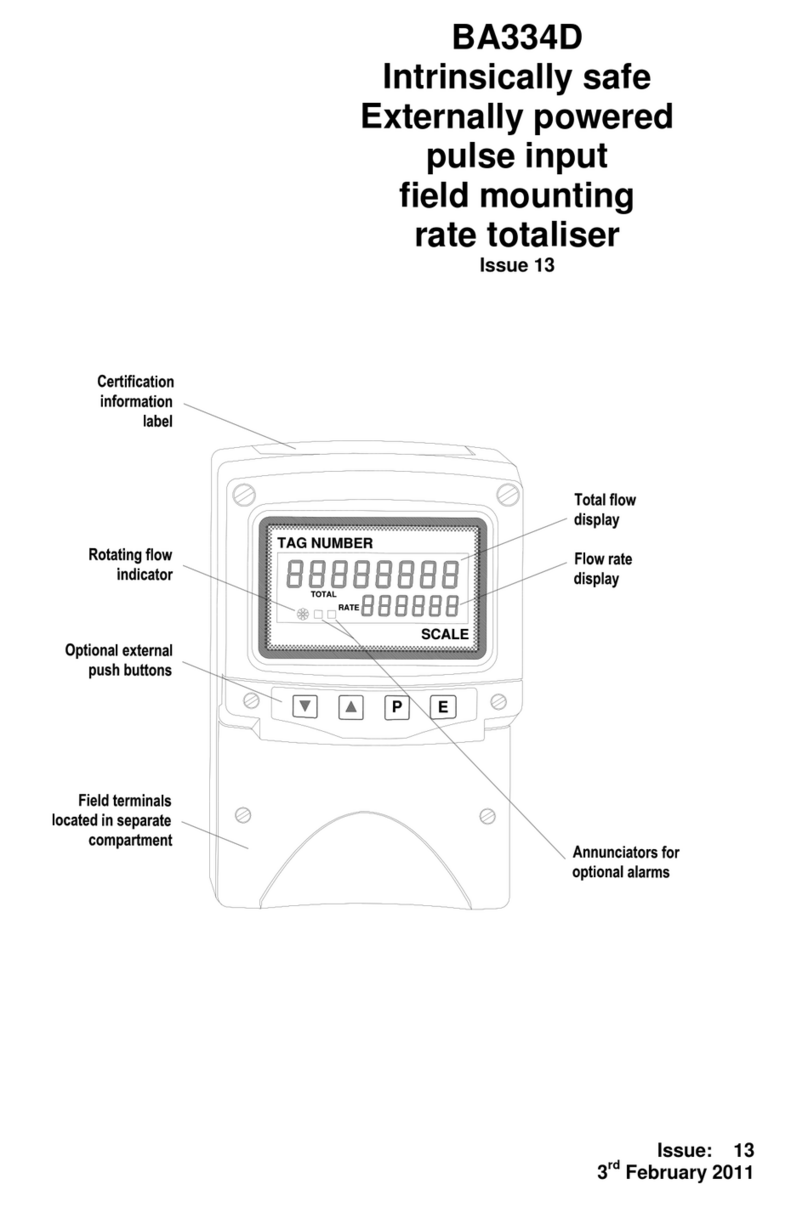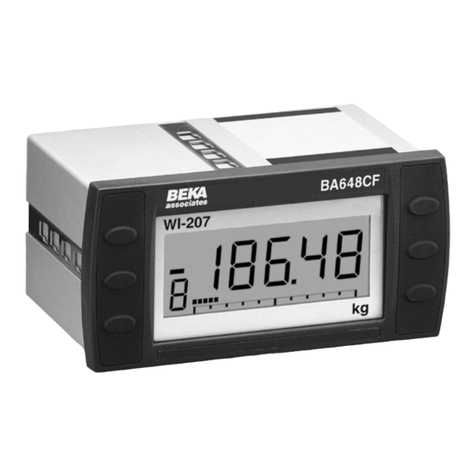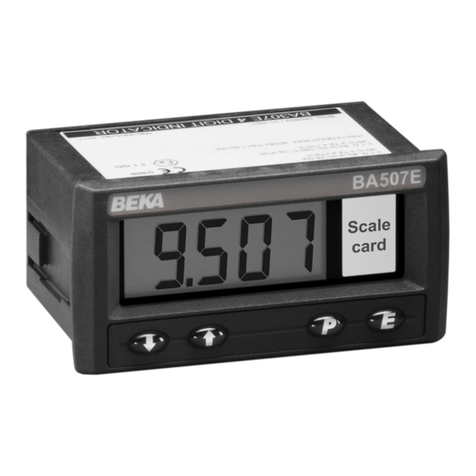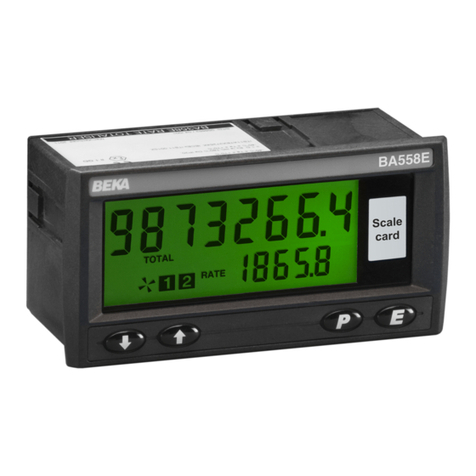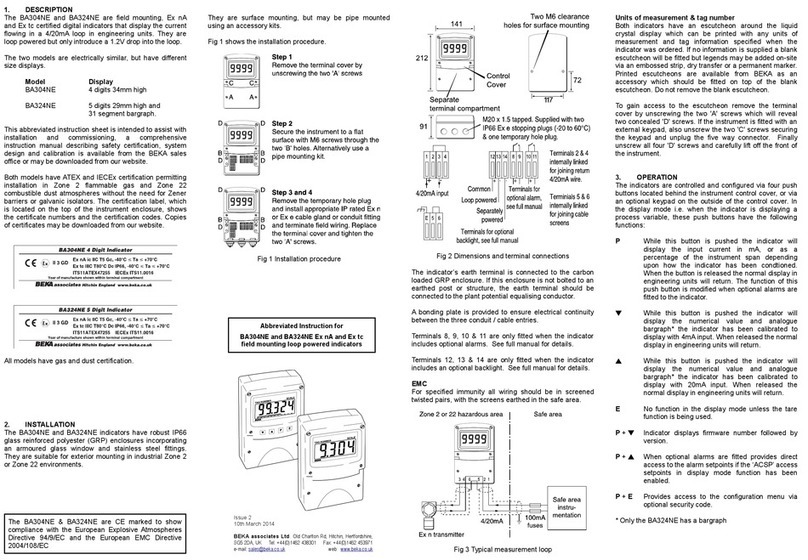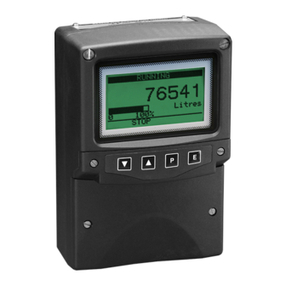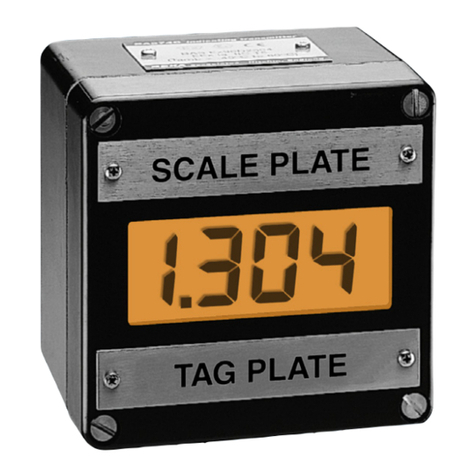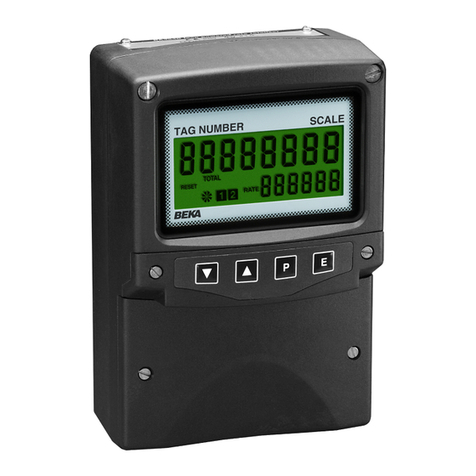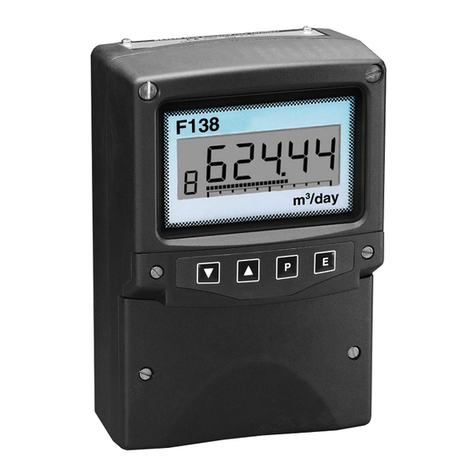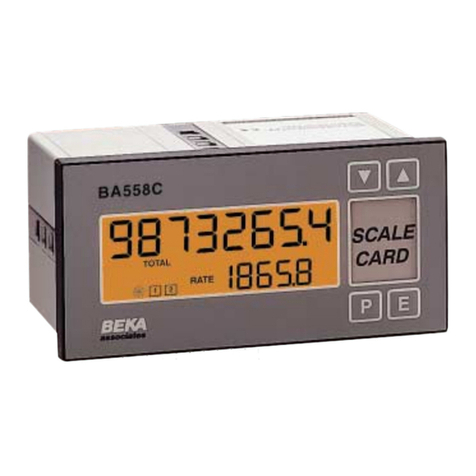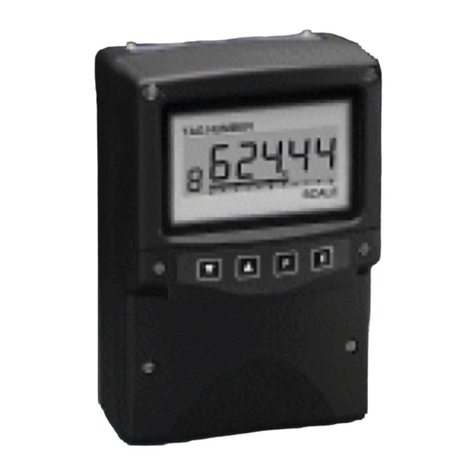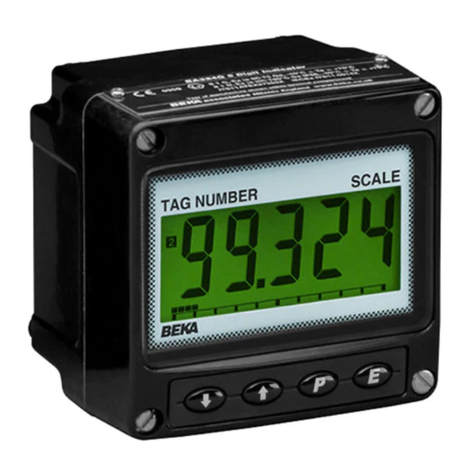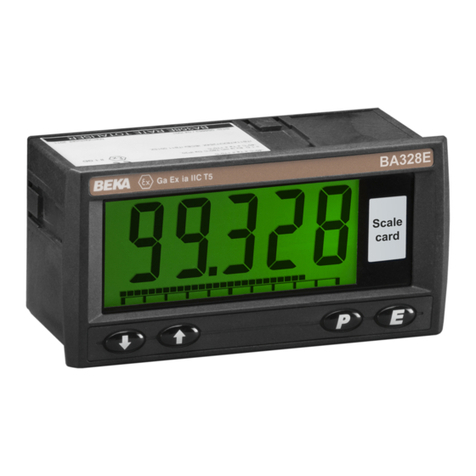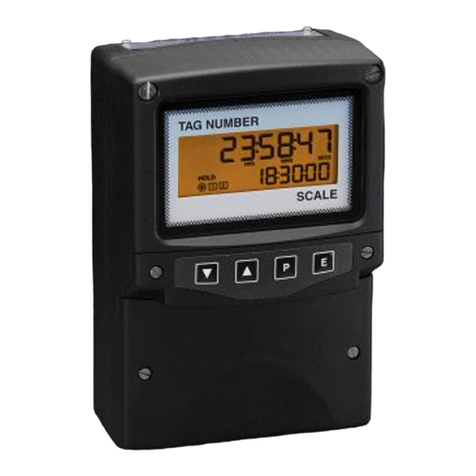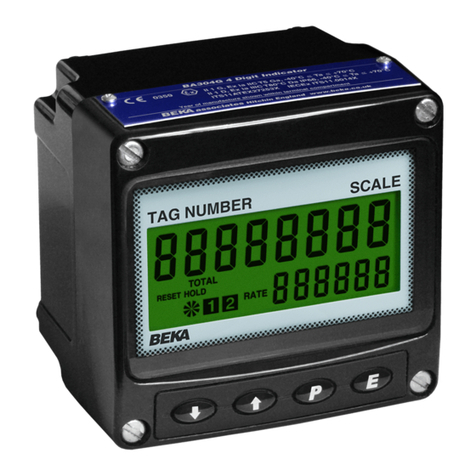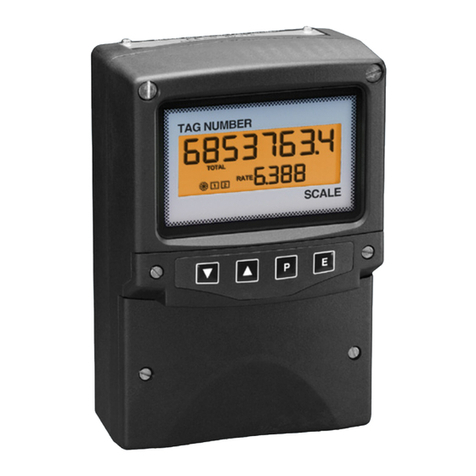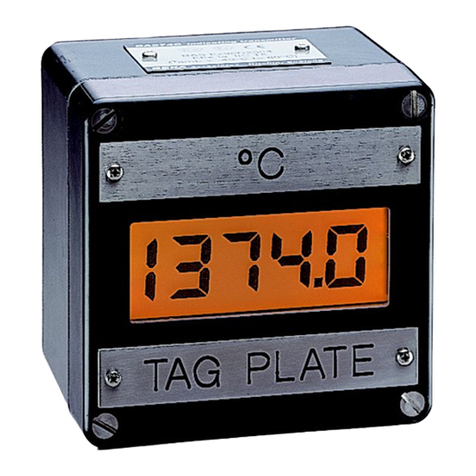
5.2 Root extractor: root
This function is primarily intended for use with
differential flowmeters which have a square law
4/20mA output. To activate the square root
extractor select 'root' from the menu and press P
which will reveal if the function is 'On' or 'OFF'. If
the function is set as required, press Eto return to
the menu, or press the Up or Down button to
change the setting, followed by the E button to
return to the main menu.
For reference, the following table shows the output
current from a non-linearised differential flowmeter.
% of full flow Current output mA
2.5 4.01
10.0 4.16
25.0 5.00
50.0 8.00
75.0 13.00
100.0 20.00
5.3 Resolution: rESn
This function defines the resolution of the least
significant display digit. Decreasing the display
resolution can improve the readability of a noisy
signal. Select 'rESn' from the menu and press P
which will reveal the current display resolution. To
change the resolution press the Up or Down button
to select 1, 2, 5 or 10 digits, followed by the E
button to return to the menu.
5.4 Position of the decimal point: d.P.
A dummy decimal point can be positioned between
any of the digits or may be absent. To position the
decimal point select 'd.P.' from the menu and press
P . The decimal point can then be moved or
turned off by pressing the Up or Down push-button,
followed by Eto return to the menu.
5.5 Calibration of display using an external
current source: CAL
This function enables the zero and span of the
indicator to be adjusted using an external
calibrated current source. When used with an
accurate traceable current source this is the
preferred method of calibration.
To calibrate the indicator select 'CAL' from the
main menu and press P. The indicator will display
'ZErO' which is a request for a 4mA input current.
Adjust the external current calibrator to 4.000mA
and again press P which will reveal the current
zero display. Each digit of the indicator display
can be changed by pressing the Up or Down
buttons. When the first digit is correct,
pressing Pwill transfer control to the next digit.
When all the digits have been adjusted, press Eto
enter the new zero. The indicator will display 'Ent'
for a few seconds while the information is being
stored in memory, and will then return to the 'ZErO'
prompt .
To adjust the display at 20mA, press the Up button
which will cause the indicator to display 'SPAn'.
Adjust the external current calibrator to 20.000mA
and again press P which will reveal the existing
full scale display. Each digit of the indicator
display can be changed by pressing the Up or
Down buttons. When the first digit is correct,
pressing Pwill transfer control to the next digit.
When all the digits have been adjusted press E to
enter the new span. The indicator will display 'Ent'
for a few seconds while the information is being
stored in memory, and will then return to the 'SPAn'
prompt. Finally press Eagain to return to the main
menu.
This function may also be used when calibrating a
complete loop from primary element to indicator
display e.g. when the indicator is displaying the
output from a resistance thermometer transmitter.
5.6 Calibration using internal references: SEt
This function enables the zero and span of the
indicator to be adjusted without the need for an
accurate external current source, or for
disconnection from the 4/20mA loop. The
accuracy of this method depends upon the
accuracy of the internal references which should be
regularly calibrated as described in section 5.7.2
To calibrate the indicator select 'SEt' from the main
menu and press P. The indicator will display
'ZErO'; pressing Pagain will reveal the current
display at 4mA. Each digit of the indicator display
can be changed by pressing the Up or Down
buttons. When the first digit is correct pressing P
will transfer control to the next digit. When the
least significant digit has been adjusted, press Eto
return to the 'ZErO' prompt which completes the
adjustment.
To adjust the display at 20mA, press the Up button
which will cause the indicator to display 'SPAn'.
pressing P again will reveal the indicator display.
Each digit can be changed by pressing the Up or
Down buttons. When the first digit is correct,
pressing Pwill transfer control to the next digit.
When the least significant digit has been adjusted
press E to return to the 'SPAn' prompt followed by
Eto return to the menu.
8
